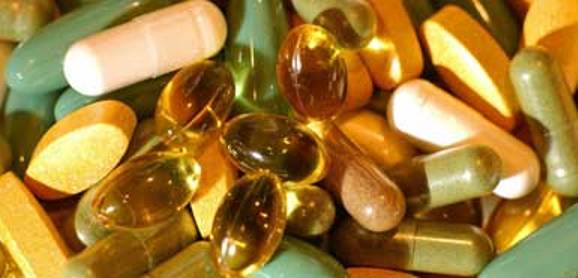Health Alerts on Vitamins and Low Fat Dairy Food – Part 1: Low Fat Food is ‘bad for you’
Advice and GuideQuote ”
Women who consume low-fat milk and yoghurt may find it harder to become pregnant
”
Regular use of vitamin pills may increase the risk of dying while low-fat dairy products could harm women’s fertility, …
research finds
Part 1:
Don’t forget to check out on …..
Part 2:
Part 3:
Part 4:
Low-fat food is ‘bad for you’
Women who consume low-fat milk and yoghurt may find it harder to become pregnant, a new study has found.
A team at Harvard School of Public Health found that women who eat a lot of low-fat dairy foods were 85 per cent more likely to suffer from a failure to ovulate.
Women who had a least one serving a day of a high-fat dairy food were 27 per cent less likely to suffer from this form of infertility than were those who consumed high-fat dairy food only once a week.
The finding suggests that the obsession with low-fat foods, driven by nutritionists trying to protect against heart disease and by consumers trying to lose weight, may have a downside.
Anovulatory infertility — the type studied here — is just one of a variety of ways in which infertility can be caused. In the population studied, it was responsible for one in eight cases of a failure to conceive.
The data comes from the Nurses’ Study, a long-running research project in the US that draws comparisons between diet and lifestyle and medical history.
A team led by Jorge Chavarro of the Department of Nutrition at Harvard and colleagues used a subset of more than 18,000 married nurses from the study who had either become pregnant or attempted to do so during an eight-year period in the 1990s. Their success, or lack of it, was compared with their dietary habits, which had been recorded several years earlier. There were 3,430 cases of infertility, of which 438 were identified as having been caused by a failure to ovulate.
By comparing the diet of these women with that of women who conceived successfully, the team were able to draw their conclusions.
The scientists, whose work is published in Human Reproduction, say that the total intake of dairy foods shows no link with anovulatory infertility. But when high-fat and low-fat dairy foods were considered separately, a difference emerged.
Women consuming at least five portions week of low-fat foods had a higher than average risk of being infertile. If women ate two or more servings of low-fat dairy foods a day, they increased their risk of ovulation-related infertility by more than four fifths (85 per cent) compared with women who ate less than one serving of low-fat dairy food a week.
And if women ate at least one serving of high-fat dairy food a day, they reduced their risk by more than a quarter (27 per cent) compared with women who consumed one or fewer high-fat dairy servings a week. High-fat foods include ice-cream and whole milk.
Dr Chavarro said that his advice to women wanting to conceive would be to change their diet. “They should consider changing low-fat dairy foods for high-fat dairy foods; for instance, by swapping skimmed milk for whole milk and eating ice-cream, not low-fat yoghurt.”
But he added that it was important that women did this within the constraints of maintaining their normal calorie intake and limiting saturated fats. He said that once they are pregnant “they should probably switch back to low-fat dairy foods as it is easier to limit intake of saturated fat by consuming low-fat dairy foods”.
Just why low-fat dairy foods should have this effect is not yet clear. High-fat dairy products have a higher concentration of the female sex hormone oestrogen than do their low-fat counterparts. Alternatively, greater insulin sensitivity among high-fat dairy consumers may improve ovulatory function.
“Given the scarcity of studies in this area, it is important that our studies are confirmed or refuted,” the team said.
Dr Chavarro added: “Clarifying the role of dairy foods intake on fertility is particularly important since the current dietary guidelines for Americans recommend that adults consume three or more daily servings of low-fat milk or equivalent dairy products.
“This is a strategy that may well be deleterious for women planning to become pregnant as it would give them an 85 per cent higher risk of anovulatory infertility.”
Falling intake
1,126m
Litres of whole-fat milk sold
2,761m
Litres of semi-skimmed sold
740m
Litres of skimmed (fat-free) milk sold
8%
Rate at which sales of whole-fat milk are falling
To be continued on the series of Part 2 , 3 and 4 ….
Part 2:
Part 3:
Part 4:
